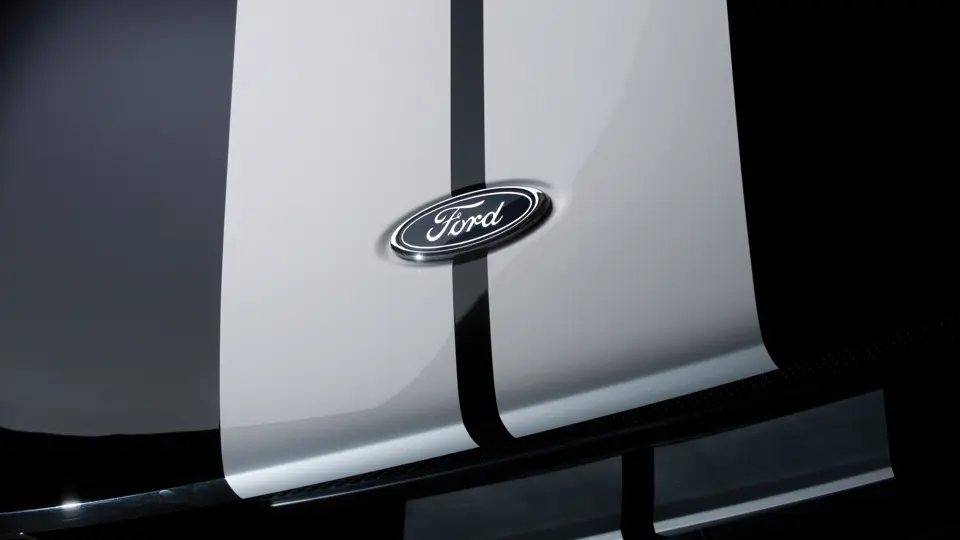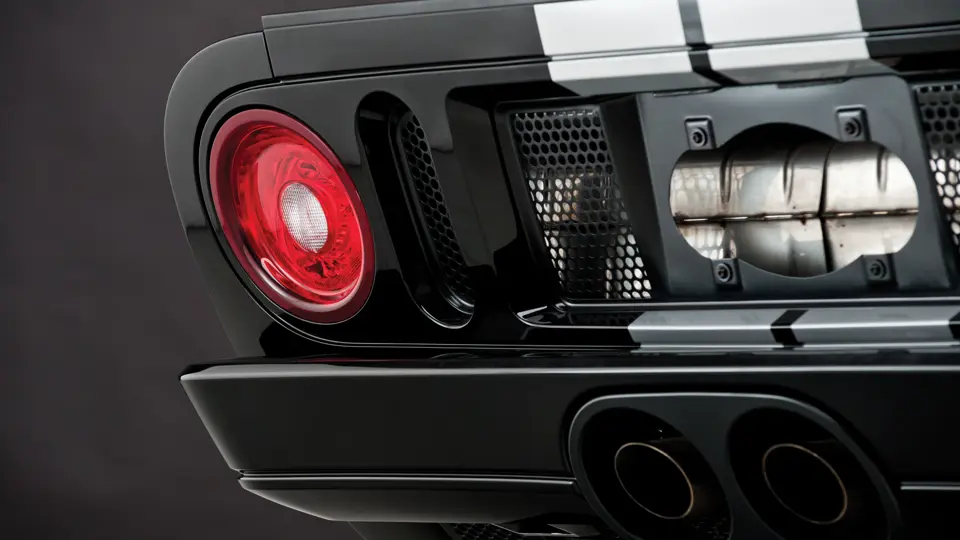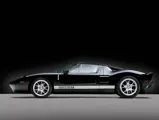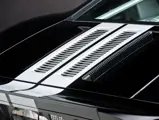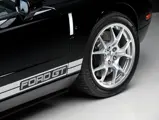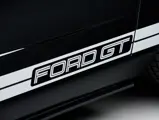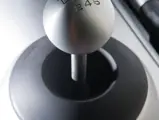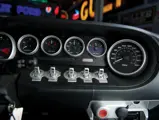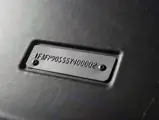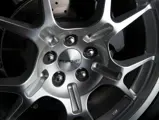550 bhp, 5.4-liter aluminum mid-mounted V-8 engine, dual overhead camshafts, sequential multi-port fuel injection with dual injectors per cylinder, Roots-type supercharger, six-speed manual gearbox, four-wheel independent suspension with double wishbones, and four-wheel ventilated hydraulic brakes. Wheelbase: 106.7"
At the 2002 introduction of the modern-day GT40 concept car at the North American International Auto Show in Detroit, Michigan, Ford’s Vice-President of Design, J. Mays, declared the GT40 “the ultimate living legend.” Further, he added, “It's a true supercar with appeal equal to that of the greatest sports cars in the world, but with the addition of a heritage no one can match.” Such was the roaring approval from both the press and public alike that Ford’s CEO, William Clay Ford Jr., decided to give a limited production version the green light. The catch, however, was that he wanted the first production versions to be readied in just 16 months, in time for the Ford Motor Company centennial celebrations.
In turn, Ford’s Director of the Special Vehicles Team, John Coletti, harnessed the pure essence of the GT40 concept and made it street legal. Perhaps the greatest challenge was that the production version had to live up to the legacy of the original GT40, which it achieved with the help of the legendary Carroll Shelby. In just three months’ time, with a dream team of designers, engineers, and state-of-the-art CAD technology, the SVT team met the objectives set by Ford. When completed, the first three cars were driven onto the Dearborn Centennial stage with three living legends of the Ford motorsports pantheon. Three-time Formula 1 World Champion Jackie Stewart drove the first car onto the stage, with John Coletti as his passenger. They were followed by 1967 Le Mans winner Dan Gurney, who was driven on stage by Nick Sheele, Ford's Chief Operating Officer. Vice-President of Ford’s Advance Product Creation, Chris Theodore, with none other than Carroll Shelby riding shotgun, drove the final car.
Perhaps as an early sign of the amazing turnaround achieved by the Ford Motor Company over the next several years, the SVT team achieved its production goals, with the first examples of the GT trickling out of the pipeline in 2003. Full production began in the spring of 2004, with a limit of no more than 4,500 cars set. Assembly of the GT began at Mayflower Vehicle Systems in Norwalk, Ohio, and they were transferred to Saleen for paint application at their facility in Troy, Michigan. The GT engines were built at Ford’s Romeo Engine Plant in Romeo, Michigan, with final assembly including installation of the engine, transmission, and final interior fitments, handled by the SVT team at Ford’s Wixom, Michigan plant.
While all of the GTs produced are designated 2005 and 2006 models, the first examples were delivered to their fortunate new owners in August 2004. The first Ford GT made available to any member of the general public was chassis number 10; this example was sold directly from the Ford Motor Company to its new owner at a charity auction, which took place in August of 2003, and was delivered the following year.
Other examples were offered to select clientele; it was considered such a privilege to be offered one of these early cars that part of the purchase agreement included a clause that the owner had to hold the car for at least 24 months, during which Ford had the right of first refusal to buy the car back. Chassis numbers 01 through 09 were reserved for “internal use” by Ford, following a long tradition of those first examples being offered mainly to Ford family members and certain executives.
Mr. Dingman served on the Board of Directors of the Ford Motor Company for over two decades, helping steer the Blue Oval through some of the most difficult periods in its existence. In appreciation of his service and dedication, he was offered the opportunity to acquire one of these special reserve vehicles. On the order form sent to Mr. Dingman on May 18, 2004, a handwritten notation in the offering letter reads “car #2.” Subsequent paperwork includes the dealer order, dated October 13, 2004, the dealer invoice from Portsmouth Ford, dated October 14, 2004 and the original title, dated December 8, 2004. It is believed that chassis 01 is retained directly by Ford Motor Company, making chassis number 02 the lowest numbered example of a Ford GT that will likely ever be offered to the general public.
Naturally, the finish of the car today is consistent with the specifications denoted on the order form, which specifies that it be finished in Mark II Black (which is understood to have not been available to the public until later in the production cycle) and optioned with full strips and lightweight BBS aluminum wheels, which are shod with Goodyear Eagle F1 tires; it is further equipped with a McIntosh Audiophile Sound System. A peek in the engine bay reveals lots of aluminum finish, including the structural bracing, which provides ample indication of the engine’s potency. Of particular beauty is the interior, which is mostly black, save for aluminum console, gauge bezels, and other miscellaneous trim, including the aircraft-style electrical controls. In addition, the black leather bucket seats have racing-style ventilation holes in the cushion and seat back.
The total production of the Ford GT was cut short of its limit, with just 4,038 examples produced, ending on September 21, 2006. With an electronically limited top speed of 205 miles per hour, supported by cutting-edge technology as well as race-proven handling and braking, this Ford GT offers championship winning performance and a legendary pedigree. It continues to reside in the elite club of modern supercars, and this example will be set apart from all others due to the exceptional pedigree of its existence and its illustrious first owner.
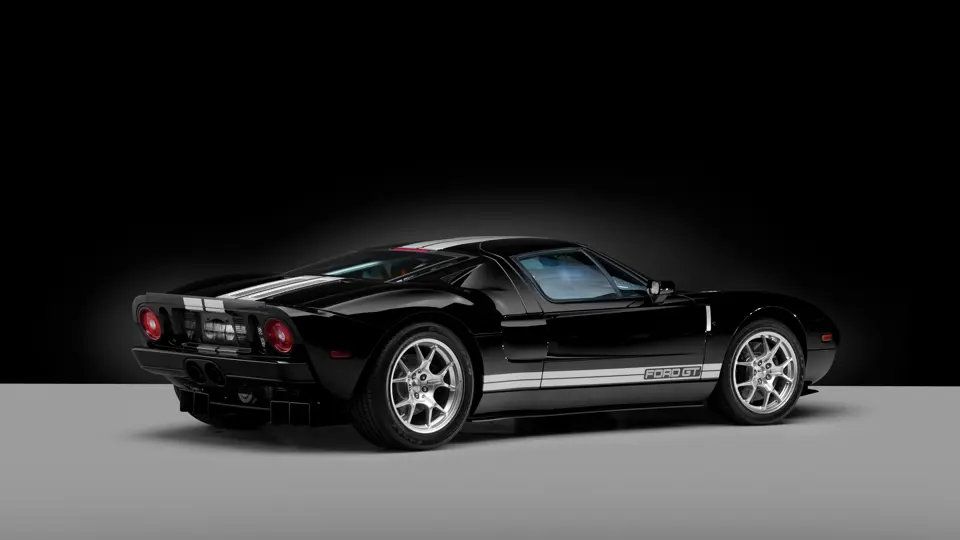




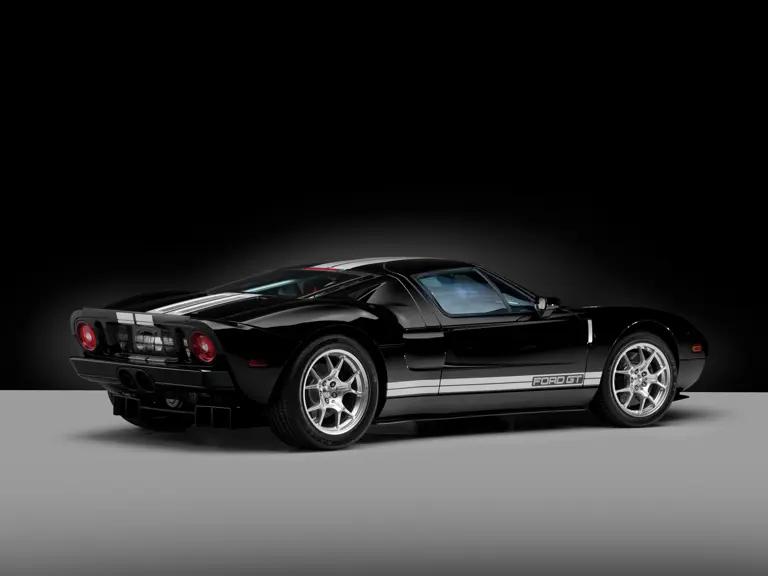
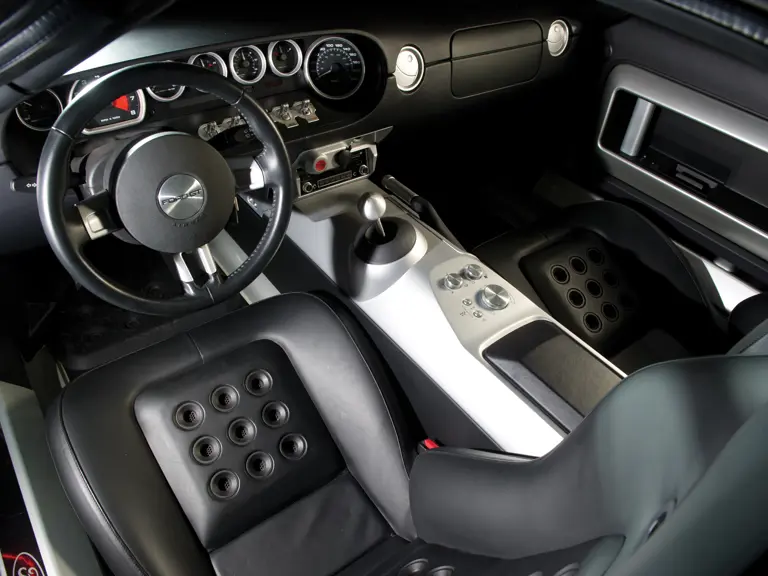

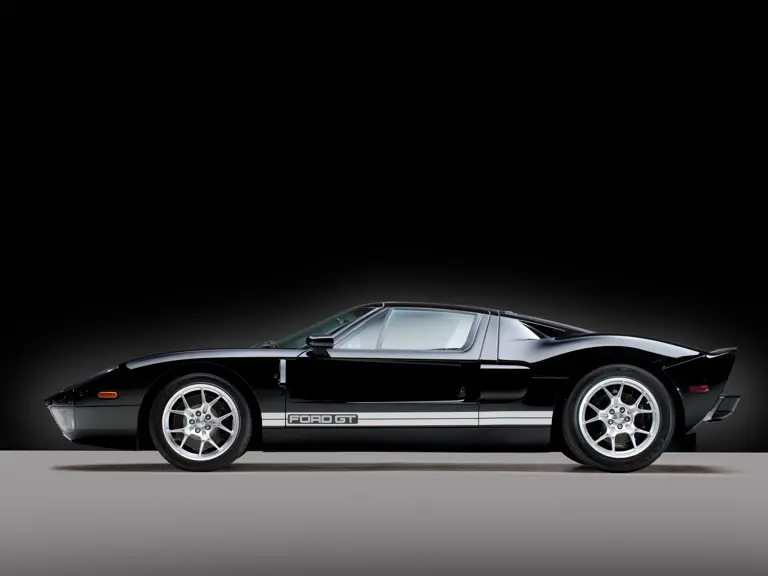

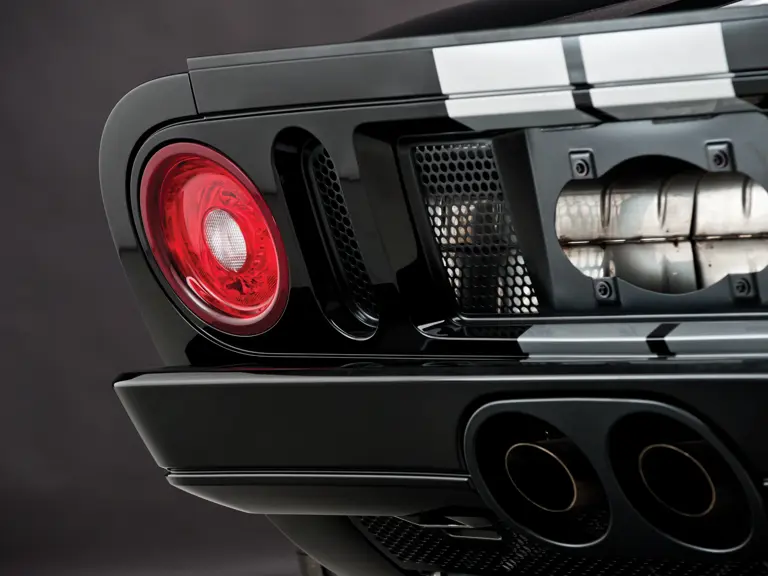

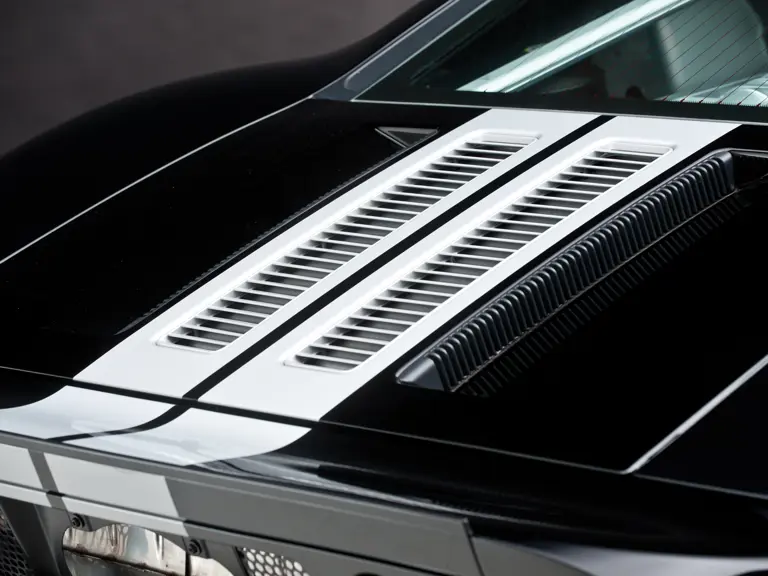

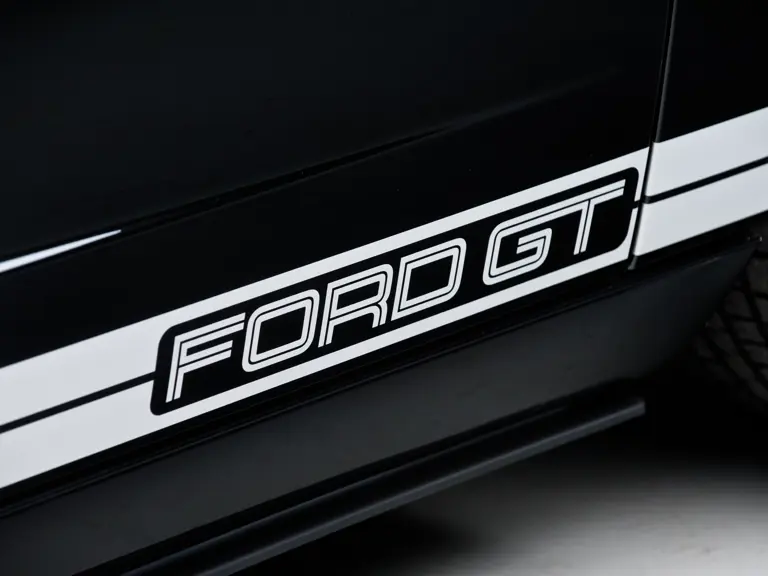

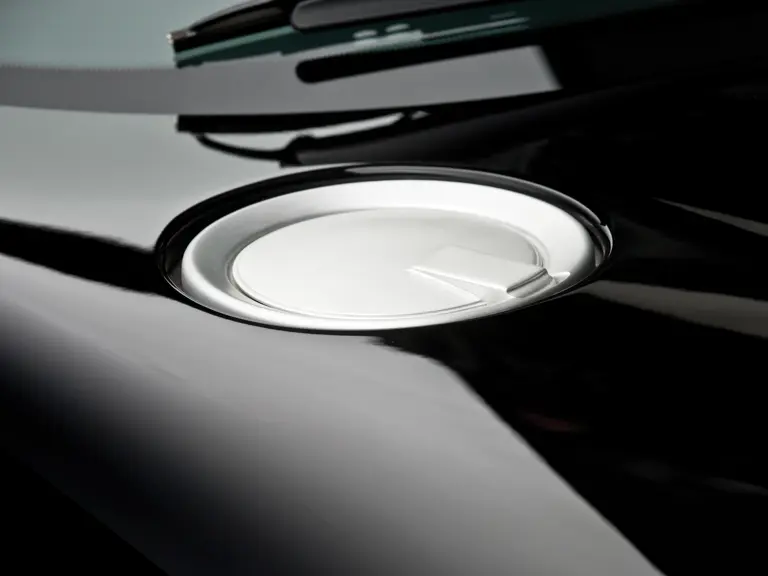

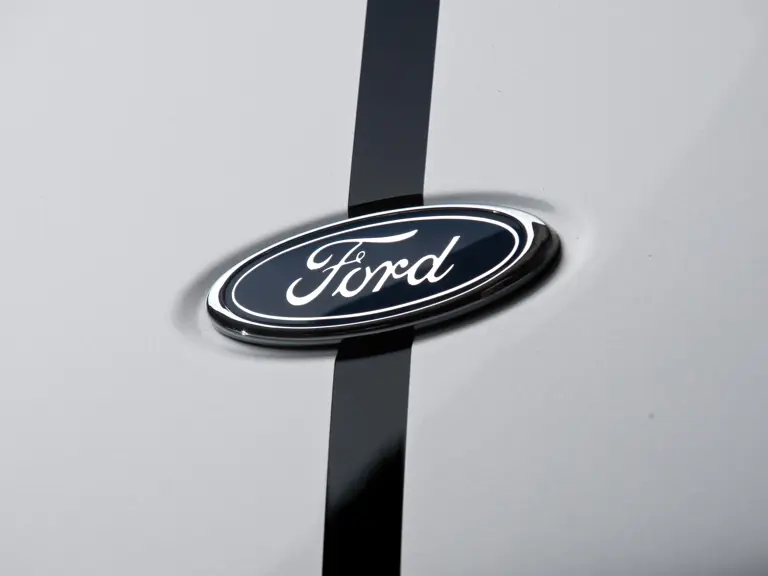


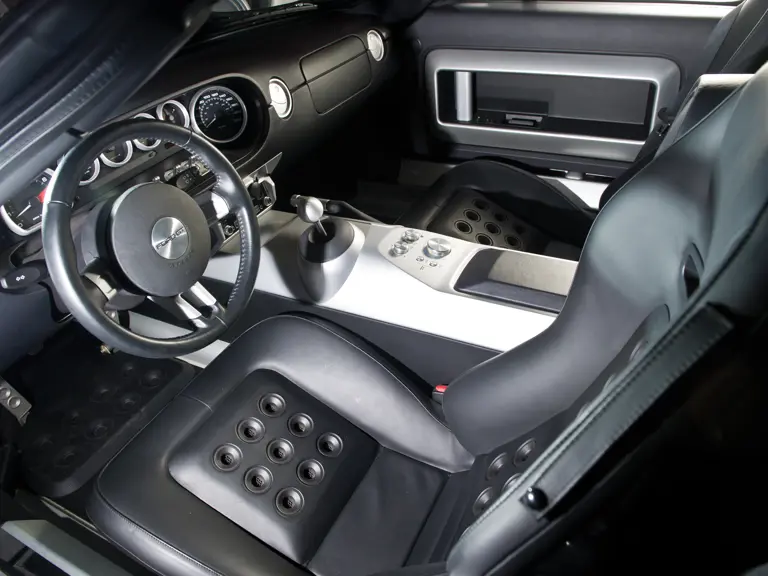



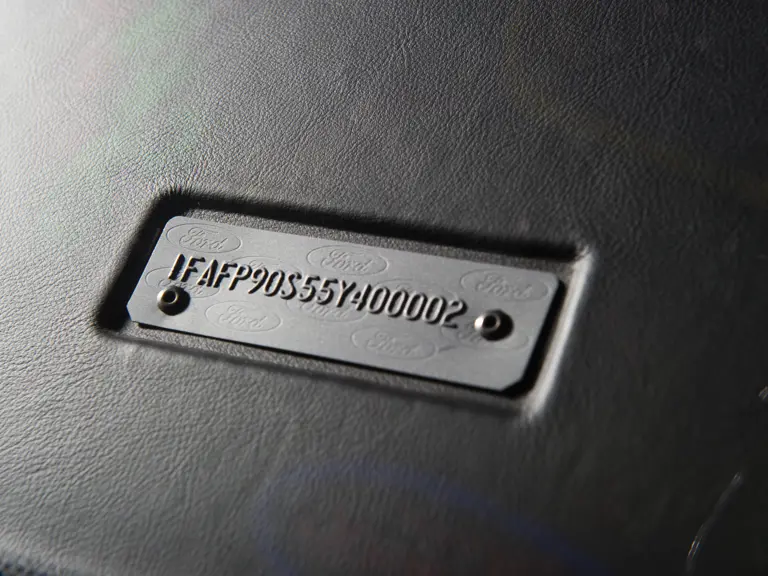
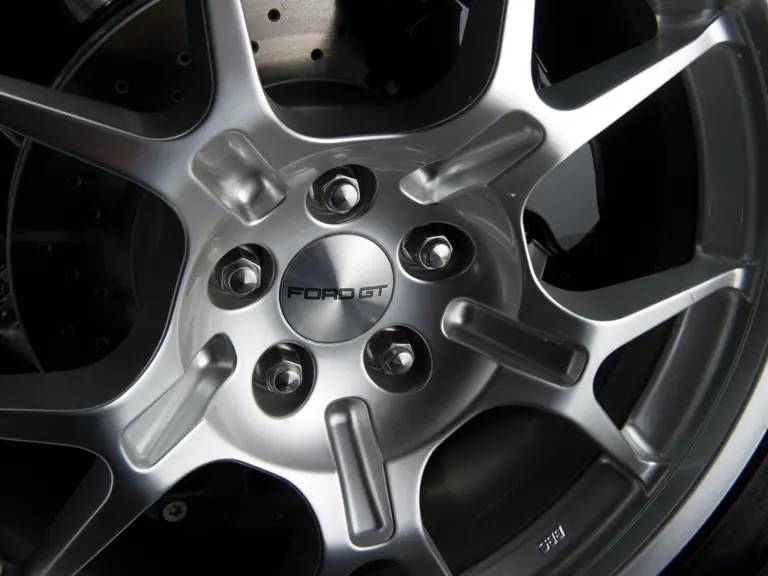
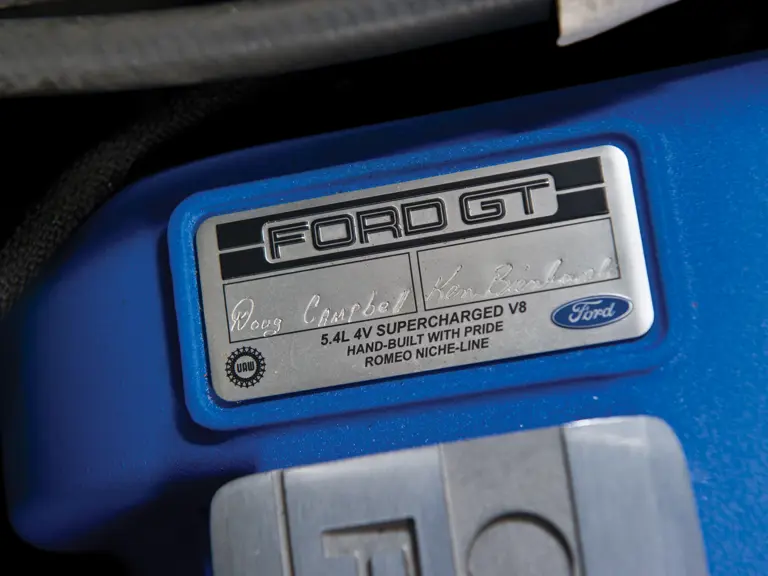
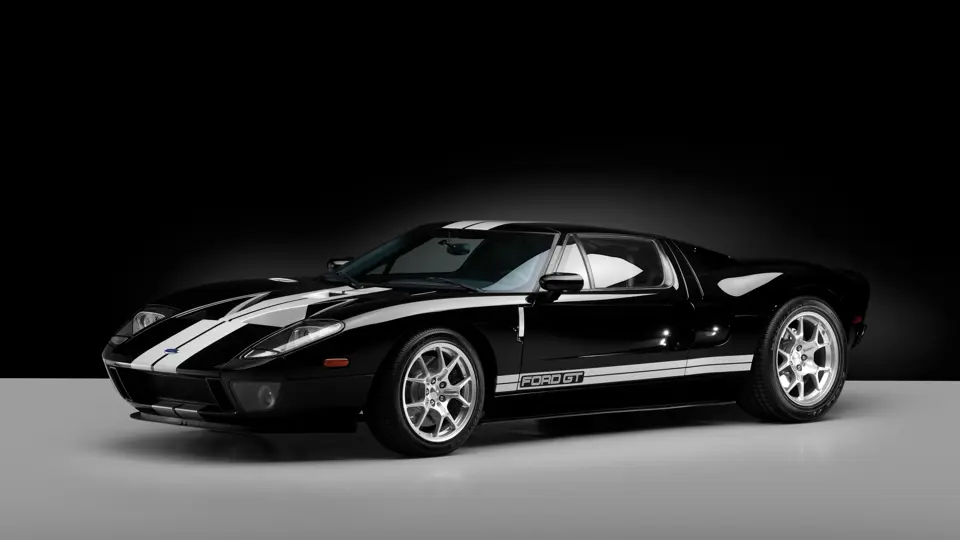
 | Hampton, New Hampshire
| Hampton, New Hampshire

